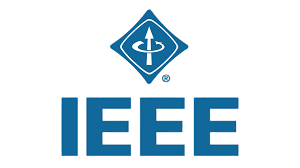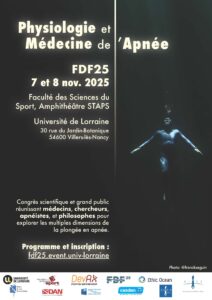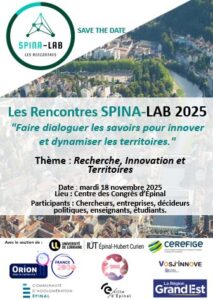Temps de lecture : 4 minutes
Début 2023, Jérôme Moritz, chercheur CNRS à l’Institut Jean Lamour, fait le constat que toutes les revues couvrant les publications en physique des plasmas demandent le paiement d’APC pour rendre les articles disponibles au téléchargement (open access). Il décide alors de porter la création d’une nouvelle revue diamant, gratuite pour les auteur·trices et les lecteur·trices, financées par les institutions. Un an exactement après le démarrage de l’aventure, la revue Open Plasma Science est créée sur Episciences.
 La revue est éditée par l’Université de Lorraine, soutenue par la Mission Appui Recherche de la Direction de la Documentation (Aricia Bassinet, Aemil Querre) et efficacement accompagnée par l’équipe d’Episciences (Céline Barthonnat, Julien Charles, Djamel Chibane et Raphaël Tournoy).
La revue est éditée par l’Université de Lorraine, soutenue par la Mission Appui Recherche de la Direction de la Documentation (Aricia Bassinet, Aemil Querre) et efficacement accompagnée par l’équipe d’Episciences (Céline Barthonnat, Julien Charles, Djamel Chibane et Raphaël Tournoy).
Portée
 Open Plasma Science publie en anglais des articles de recherche et des actes de conférences sur les thèmes suivants :
Open Plasma Science publie en anglais des articles de recherche et des actes de conférences sur les thèmes suivants :
- Plasma surface interaction, sheaths, sputtering and surface emission
- Turbulence, instabilities and transport
- Collisionless plasmas
- Laser-plasma interaction, inertially confined plasma, relativistic plasma
- Magnetically confined plasma
- Plasma propulsion, plasma sources
- Electrical discharges, dusty plasma, plasma diagnostics, plasma and processes
- Plasma-liquid Interactions
- High pressure plasma
- Modeling and numerical simulations
- Scientific instruments related to plasma science
Philosophie
Cette épi-revue s’appuie sur les archives ouvertes comme ArXiv, HAL ou Zenodo. En pratique, un·e auteur·trice dépose son projet d’article dans une archive ouverte avant de se connecter au site web d’Open Plasma Science et de le proposer à l’examen. Le fait de déposer un article en pré-publication (preprint) sur une archive ouverte permet à l’auteur·trice de rendre sa recherche immédiatement disponible et de se protéger d’un éventuel plagiat : les archives ouvertes institutionnelles horodatent le dépôt, attribuant ainsi la paternité de la publication aux auteur·ices.
Les articles sont publiés sous licence CC-BY, conformément au Plan S ; les auteur·trices retiennent l’ensemble de leurs droits.
Les propositions d’articles sont examinées par un comité éditorial international, et révisées en simple aveugle (seul le nom de l’auteur·trice est connu).
Les auteur·trices sont invité·es à soumettre dès maintenant des propositions d’article !
Pour toute question sur la revue, contactez : ops@episciences.org
Pour toute question sur l’édition de revue diamant, contactez : ddoc-edition-contact@univ-lorraine.fr
At the start of 2023, Jérôme Moritz, CNRS researcher at the Institut Jean Lamour (France), observed that all the journals on the topic of plasma physics were asking for authors to pay Article Processing Charges to publish their articles in open access. He then decided to create a new diamond open access journal, free for the authors and the readers, paid for by the institutions.
One year later, the Open Plasma Science journal is created on Episciences, a scientific publishing platform.
The journal is published by Université de Lorraine, assisted by Aricia Bassinet and Aemil Querre from the University Library and expertly supported by the Episciences’ team: Céline Barthonnat, Julien Charles, Djamel Chibane and Raphaël Tournoy.
Scope
OPS reports on original theoretical, experimental, numerical and applied research concerning plasma science in the broadest sense. Topics of interest include, but are not limited to:
- Plasma surface interaction, sheaths, sputtering and surface emission,
- Turbulence, instabilities and transport,
- Collisionless plasmas,
- Laser-plasma interaction, inertially confined plasma, relativistic plasma,
- Magnetically confined plasma,
- Plasma propulsion, plasma sources,
- Electrical discharges, dusty plasma, plasma diagnostics, plasma and processes,
- Plasma-liquid Interactions,
- High pressure plasma,
- Modelling and numerical simulations,
- Scientific instruments related to plasma science.
Philosophy
The publication process of Open Plasma Science (OPS) is backed up by open repositories such as arXiv, HAL or Zenodo. In practice, an author deposits its article in an open archive before connecting to the OPS website and proposing it for review. The deposit of a pre-publication in an open archive allows the author to make its research available immediately and to be protected from possible plagiarism (institutional open archives time-stamp the deposit, which is then indexed in scientific databases and research engines).
Articles are published under the CC-BY licence, in compliance with Plan S, and the authors retain the entirety of their rights.
Submitted articles are examined by an international editorial board and evaluated by single peer review (only the authors’ names are known).
Authors may already submit proposals of articles in the journal.
For any question on the journal, contact: ops@episciences.org
If you have questions about the publishing of diamond journals, contact: ddoc-edition-contact@univ-lorraine.fr







![Vers l'article [Retour sur] Le séminaire annuel des ambassadeurs et ambassadrices Science Ouverte](https://factuel.univ-lorraine.fr/wp-content/uploads/2025/10/ambassador-300x300.png)

![Vers l'article [Retour sur] Rencontre du réseau des administrateurs et administratrices d’équipe eLabFTW de l’Université de Lorraine](https://factuel.univ-lorraine.fr/wp-content/uploads/2025/09/20250929_article_elabftw-300x225.jpg)





